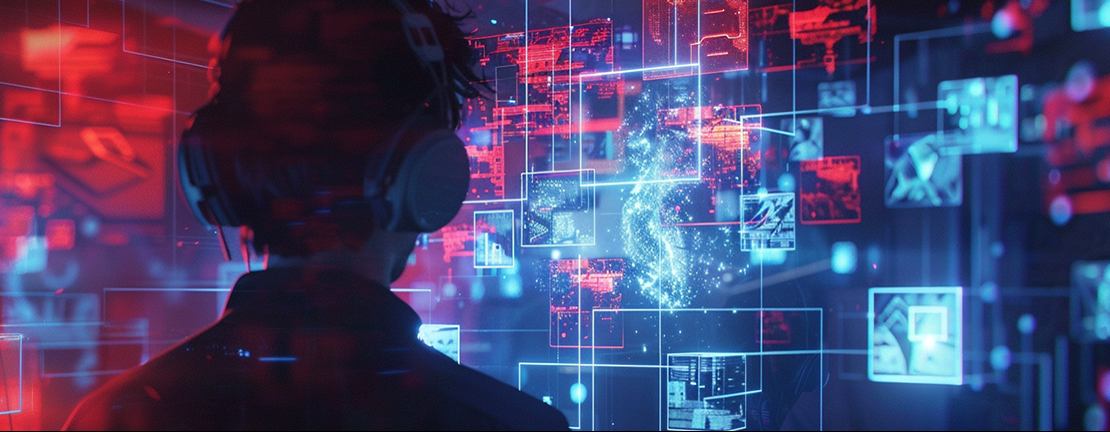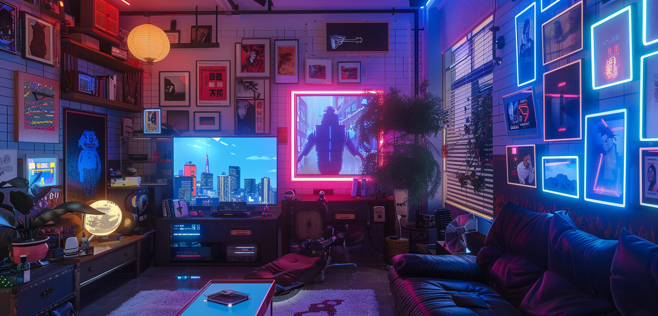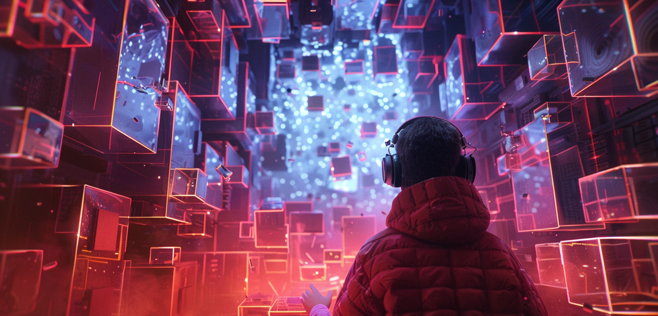Published 03 Nov 2024
NFTs and Gaming: Revolutionizing Skins and In-Game Assets

The gaming industry has undergone significant transformation over the years, with digital ownership becoming a central element of player experience. Traditionally, players could only purchase and use in-game assets within the confines of specific games. Now, with the advent of blockchain technology, NFTs (non-fungible tokens) are reshaping how players view and interact with digital assets. NFTs enable true ownership, allowing players to buy, sell, and trade in-game assets like skins, weapons, and collectibles as unique items on the blockchain.

NFTs and True Ownership in Gaming
NFTs, or non-fungible tokens, are unique digital assets stored on the blockchain that represent ownership of a specific item or piece of content. In gaming, NFTs have introduced a transformative way to handle digital assets, allowing players to truly own their in-game items like skins, weapons, and collectibles. Unlike traditional in-game assets, which are controlled by the game developer and locked within the game environment, NFT-based assets are unique and tradeable across different platforms, making them versatile and valuable beyond a single game.
Through blockchain technology, NFTs assign real ownership to players, who can now buy, sell, or trade their items just as they would physical assets. This transition from traditional assets to NFT-based ones means that in-game items retain value, ownership, and utility even outside the game they were initially purchased in, marking a new era of digital ownership and expanding possibilities for gamers worldwide.

NFT Skins and the Evolution of In-Game Assets
NFT skins and in-game assets have brought a new level of uniqueness and value to the gaming world. Unlike traditional skins, which are often limited to a single game or platform, NFT skins are unique, blockchain-backed assets that can be owned, traded, and even transferred between different games or platforms. This interoperability and tradability add layers of personalization and value that were previously unavailable to gamers.
Some popular games and platforms, such as Axie Infinity, The Sandbox, and Decentraland, have already integrated NFT-based assets, allowing players to buy, sell, and trade items with real-world value. This shift not only enhances the gaming experience by offering exclusive, one-of-a-kind items but also opens up new revenue streams for players. By owning and trading these assets, players are not just interacting with game content but also participating in a broader digital economy. NFT skins enable players to express their individuality within a game while also giving them real ownership, making gaming a more immersive and financially rewarding experience.

True Ownership and Transferability of In-Game Assets
NFTs have introduced true ownership to gaming, allowing players to buy, sell, and trade in-game assets beyond the confines of a single platform. Unlike traditional in-game purchases, where items are restricted to one account or platform, NFT-based assets provide players with complete control over their digital goods. This new level of ownership has real-world implications, as players can now monetize their gameplay through various secondary marketplaces and trading platforms.
The concept of transferability is also revolutionary. With NFTs, assets are no longer locked within a single game’s ecosystem. Players can transfer assets across compatible games or platforms, creating opportunities for cross-platform utility. Successful examples include OpenSea and Rarible, where NFT owners trade skins, weapons, and collectibles with real monetary value. This development turns in-game assets into valuable digital commodities, empowering players with financial freedom and allowing them to build a tangible connection between their digital experiences and the real world.

Monetizing In-Game Assets with NFTs
NFTs have opened new avenues for players to generate income from their in-game assets, transforming gaming from a hobby into a potential revenue source. Players can now trade or even lease their NFT items on decentralized marketplaces, creating a dynamic economy around digital collectibles. These marketplaces, such as OpenSea and Rarible, facilitate the buying and selling of assets, making it easier for players to realize the value of their gaming achievements.
For instance, some players have earned substantial profits by trading rare skins or exclusive items, which hold value due to their scarcity and uniqueness. Developers, too, benefit from NFT-based assets by earning royalties from each resale transaction, a feature that ensures creators are rewarded as their creations increase in value. Case studies, such as the success of NFT-based assets in games like Axie Infinity, illustrate the earning potential for both players and developers, establishing NFTs as a sustainable model for monetizing in-game achievements and creations.

Interoperability and the Future of Cross-Game Assets
One of the most exciting prospects of NFTs in gaming is their potential for interoperability — allowing players to use a single asset across multiple games or platforms. This concept, if fully realized, would enable players to carry their favorite items, skins, or characters from one game world to another, enhancing the value and usability of these digital assets. Interoperability creates new opportunities for developers to collaborate, fostering interconnected ecosystems where players can engage across different games in a unified experience.
For players, interoperability would mean a deeper investment in their assets, as these items would not be confined to one game but rather could gain value and functionality across various environments. Developers, on the other hand, could attract more users by promoting games that support popular NFT assets, driving engagement and loyalty. However, achieving this level of cross-platform functionality presents technical and regulatory challenges. Standards for NFTs, compatible game engines, and agreements between game studios will be necessary to make interoperability a reality. Despite these hurdles, the prospect of interoperable NFT assets continues to fuel innovation, with many seeing it as the next frontier in gaming’s digital transformation.

Challenges and Considerations in NFT Gaming
The integration of NFTs in gaming brings exciting opportunities but also introduces a set of challenges and considerations that players, developers, and investors must navigate.
Regulatory and Legal Issues
The regulatory landscape for NFTs is still developing, with different jurisdictions treating digital assets in varying ways. Game developers and players need to be aware of potential legal implications, including ownership rights, taxation, and intellectual property considerations. As the market grows, clearer regulations will likely emerge, but until then, navigating this uncharted territory requires caution.
Security Risks
With the high value attached to certain NFT assets, security becomes paramount. Players face risks from hacking, phishing, and fraudulent platforms that may attempt to compromise their assets. Developers must implement robust security measures to safeguard users' assets and ensure the legitimacy of marketplaces. Educating players on best practices, such as using secure wallets and verifying transaction sources, is equally crucial.
Market Volatility
Like other digital assets, NFT values can fluctuate significantly, impacting the overall worth of in-game assets. This volatility can be both a benefit and a drawback, offering opportunities for profit but also posing risks of sudden losses. Players and investors should approach NFT gaming with a clear understanding of the market's dynamic nature and consider diversification and strategic planning to mitigate risks.
Balancing these challenges while capitalizing on the potential of NFTs will be essential as the gaming industry moves toward wider NFT adoption and innovation.

Future Trends and Predictions on NFTs in Gaming
The integration of NFTs into gaming is set to evolve rapidly, with expected advancements in technology and a growing interest from mainstream gaming developers. As NFT technology becomes more sophisticated, we anticipate broader applications for in-game assets, with improved interoperability across different platforms and games. The concept of owning and trading unique digital assets is becoming more appealing to players, and with ongoing developments in blockchain, the infrastructure for cross-game asset use will likely expand.
Mass adoption of NFTs in mainstream games may soon follow, as large game developers and studios experiment with NFT assets to enhance player experiences. This shift could lead to the creation of robust secondary markets where players can buy, sell, and trade items seamlessly, further fueling the gaming economy and offering new revenue opportunities for both players and developers.
As NFTs continue to reshape the gaming landscape, they also present unique challenges, including the need for regulatory clarity, security enhancements, and managing market volatility. However, these challenges can be mitigated with careful planning, technological innovation, and community engagement.
By embracing the transformative potential of NFTs, the gaming industry is poised to enter a new era where digital ownership, creativity, and economic opportunity come together, offering an enriched experience for all participants. For players, developers, and investors alike, the future of NFTs in gaming is both exciting and filled with opportunity.
Read More




 Get RateX Pro
Get RateX Pro

 14 May 2024
14 May 2024
